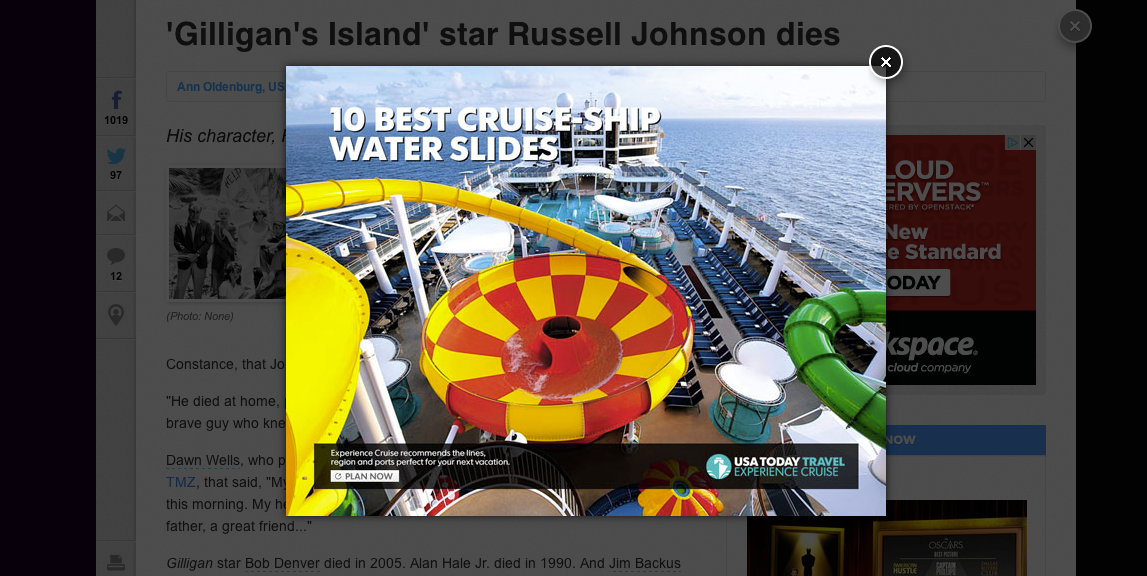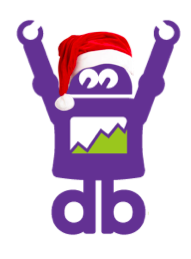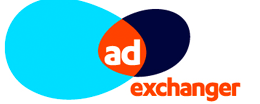Blog
Our Series B Funding
Posted June 6th, 2014 by Jonathan Mendez in
Today we announced we have received $18M of funding into Yieldbot in a Series B raise. New investor SJF Ventures lead the round that included existing investors RRE Ventures, NAV Ventures, Common Angels and additional contribution from City National Bank.
In an era when everyone wants to bucket your business into a category on a slide or an acronym we have consistently defied categorization. If you want to call us any one of these names below it would be accurate:
A big data company
A real-time analytics company
A predictive analytics company
A machine learning technology
A creative testing service
A traffic fraud detector service
A media company
A demand partner
A search media company
A mobile media company
A social media company
A shopper marketing company
A performance display company
A yield optimizer
A real-time ad server
This funding will help ensure we continue to be able to define ourselves. When you create something entirely new and never seen before you get that privilege.
So how do we define ourselves? One word, performance.
Performance for our buyers based on back-end metrics. We are told more often than not that we are competing on back-end metrics with paid search ads and blowing away anything they’ve ever seen in display. That defines us.
Performance for our publishers based on effective CPM and revenue. That defines us. For our oldest partners we are their largest source of revenue at the highest non-direct CPM. In fact, the CTR our technology generates are so high we are now working closely with direct and programmatic sales teams to run more campaigns through Yieldbot.
When marketer performance is driving effective CPMs higher and everyone is feeling great about it, you know you have something special. There have only been a few technologies that have ever done that at scale for publishers -- none of them using real-time or click-stream data. That ability to create high value media with our technology, that defines us.
Best of all we are making ads better on the web by making them more relevant to consumers. That defines us.
This funding however isn’t about defining Yieldbot. Our focus is on our customers. It’s more accurate to say it’s about redefining what is possible with display advertising. It’s about new buyers into new inventory. It’s about new technology applied in new ways. It’s about new levels of performance for marketers and publishers. It’s about a new channel of real-time media that is created explicitly by consumers in a privacy friendly way. We are creating media value in the digital ad ecosystem at levels no one ever has before and in ways no one ever has before. That is why we raised money. It is value we will continue to invest in for marketers, publishers and consumers.
The next chapter begins…
How Publishers Can Take Advantage of Mobile Social
Posted May 27th, 2014 by Jaan Janes in
Pinterest continues to make headlines as its footprint expands and it launches its first ad products, but what is the value of its traffic to both publishers and advertisers through the many outbound links it drives daily? What devices are being used? What is the impact on ad performance from this traffic? How does it compare to the other largest source of social traffic, Facebook?
Yieldbot is integrated with many leading publishers that
actively work with Pinterest to drive traffic and “pinning” activity. For many
of these publishers, our data shows that Pinterest has become the one of the
top 3 largest sources of inbound referrer traffic (along with Google search and
direct traffic). However, these visitors
tend to bounce at a very high rate. Even with a lower amount of referrers in
April of 2014 on sites on the Yieldbot platform, Facebook drove 12% more page views
for publishers than Pinterest.
The influence of mobile is profound. For people coming to
publishers from social media on mobile the pageview traffic regularly approaches
or beats 50% of their total mobile page views.
As important as pageview traffic from social media is the
efficacy of the traffic for advertisers. The CTR rate on Yieldbot associated
with mobile social referrers always beats desktop traffic.
Yieldbot CTR Index By
Session Referrer Source
(Index is compared to overall Yieldbot CTR in April 2014)
Facebook Mobile 117
Twitter Mobile 112
Pinterest Mobile 96
Facebook 84
Pinterest 68
Twitter 28
The fact is these visitors will click relevant messaging.
They are in a media consumption pattern that screams “give me relevant
information!” Publishers that can harness technologies that deliver relevant
advertising will have great success in mobile.
Key Findings:
Recommended Actions:
There is an enormous market opportunity for publishers to
harness the power of social media and Yieldbot is actively working with its
publishers to build new revenue streams while delivering results for its ad
partners.
Publishers Sitting on a Goldmine
Posted February 6th, 2014 by Rich Shea in Publishers, gold, relevance

If I was asked for one slide that best captured the motivation behind the technology and business direction of Yieldbot it would still be this original one. It IS the elevator pitch. And the points it makes are clear.
This slide is actually from the presentation that @jonathanmendez first made to me over four years ago when he was pulling me in to build Yieldbot with him. All this time later, it still best sums up the motivation behind our technology and how we view our market. I was fairly new to ad tech in 2009 and the thing I remember coming away thinking the most after our first conversation was: "It's not already done that way?".
Everything captured in that slide is as true in 2014 as it was in 2009 before any lines of code for Yieldbot had been written. In an industry that embraces the pivot, it's nice to have a slide that could still be used five years from now as much as it could five years ago.
Intent is Generated in the Publisher Domain
Search gets to take a peek at users' intent as they do part of their navigation through content on the web. But when a user is searching, they're searching *for something*. Search is a tool for getting the user to what they want. Publisher content is where users spend their time discovering new interests. Or digging deeper into existing interests. Their clickstream through the site and what they interact with is how they express what they are REALLY interested in.
Yieldbot's analytics discovers the intent of the publisher's users to use relevance as a tool for effectively monetizing the publisher's users interests. When advertising is relevant to the user's intent, it is not seen as intrusive. Done right it can augment the user's experience by delivering to them something that they are interested in. Something that matches their intent.
Only Pubs Can Effectively Harvest Visitor Event & Contextual Data
Publishers have a direct relationship with their users. As users consume content they are signaling what they are interested in. Yieldbot's technology lets publishers leverage this relationship, taking the value created by the content and making it monetizable when and where possible.
Yieldbot's javascript is loaded directly on the publisher's page. This arrangement is similar to first-generation web analytics. But while first-generation web analytics was useful for understating what happened in the past, Yieldbot is driven by real-time understanding of what is happening on the publisher's site and in the users' sessions, and can take action on it in real-time. Yieldbot's decisioning algorithms take into account the full range of context such as the site referrer to the session and time of day.
Only Pubs Can Weave Ad Optimization Tech Into the Experience
The publisher owns the experience on their site. This is where the three dimensions of optimization come together - the visitor and their intent, the context of their clickstream, and the creative for the message. This is what Yieldbot's technology does - our machine learning algorithms running in real-time with our ad decisioning pick the most relevant action presented in the way that's most engaging.
Other approaches, by not optimizing based on relevance, are by definition optimizing on the wrong thing for the user and publisher (and advertiser for that matter). Retargeting for example optimizes to a cookie that was set some time in the past on some other domain, without regard for whether the message is relevant to the user at that moment. That's why retargeting examples are so jarring. More often than not their message is no longer relevant, and the experience is a reminder to the user that they're being followed around the web; in the process detracting from the experience on the current publisher site. Contextual, as another example, only looks at one of the factors for relevance and can only drive simple targeting rules that are broadly defined.
The key here is that optimizing for relevance wins. Both brand and performance advertisers want relevance and will pay a premium either for relevant placement or performance (a natural byproduct of relevance). Publishers have a double-win of relevant messaging alongside their content from an experience point of view, as well as collecting the premiums that relevance brings from the advertisers. And the user always benefits from relevance in their overall experience of getting at what they are interested in.
Only Pubs Can Accomplish the Above Without Privacy Issues
Yieldbot does not track users across the web. We support Do Not Track initiatives because we don't think relevance for anyone involved (the user, the advertiser, and the publisher) depends on this type of tracking to be effective. Our results back this up.
With Yieldbot the value of the publisher's media is not diluted by bringing the insights about a user's intent and trying to monetize them somewhere else. Let retargeters dilute the value of the publisher's media and dilute the relevance to the user. By contrast Yieldbot makes decisions based on the user's intent on this particular site at this particular time.
Pubs Are Sitting on a Goldmine
For all of the reasons above, publishers are indeed sitting on a goldmine. Their domain is where users engage with content and express their interests. If this is the information age, then the value is where the information is. Publishers own the value of the web. Until we built Yieldbot, they were just lacking the technology that allows them to realize that value.
-- @shearic
Intent Targeting vs. Contextual Targeting
Posted January 17th, 2014 by Rich Shea in contextual, intent, relevance

The image above is an example of the problem with Contextual targeting with the type of unfortunate pairing of ad and content we all come across now and again. Look closely at the headline of the content behind the interstitial ad for "10 Best Cruise Ship Water Slides", and you'll see it's about the passing of Gilligan's Island star Russell Johnson.
How Contextual Gets Confused
There have been worse combinations, to be sure. But there's little chance that a visitor will be interested in a cruise-related ad just because the subject of the underlying story is a star from a television show that featured as its set-up an ill-fated cruise.
The culprit here is so-called "Contextual" targeting. This ad technology scans the words or phrases in the content of the page, picks out the common ones, and then matches ads to pages based on a list of words or phrases associated with the ad. In this particular case it may have been the several instances of the word "island" on the page that triggered the match.
Really it's a shame that this approach is called contextual, because in truth every fact about what is involved and led up to that ad impression is context, but that's the terminology we're stuck with.
Why Intent Is Better
In contrast, Yieldbot's Intent-based targeting comparatively discounts the value of the content on the page itself. Instead, multiple Intent Signals, each derived from a unique "intent source", are used to make a real-time determination of the appropriate ad for the specific pageview -- if any.
To serve an ad, Yieldbot takes a handful of Intent Signals and brings them together to determine if any ads are appropriate to display for the pageview and which ads are most relevant. Sometimes it's determined there actually is no ad relevant enough, and that's fine too.
Yieldbot's intent sources include data derived from external referrer links, the path of pages through the session, and key attributes of the page itself. Pages themselves have associations with intent based on sessions of past visitors and these are correlated with the signals for the current user for the pageview. An independent decision on matching is made every single pageview taking all of these factors into account.
Ultimately what makes intent better than contextual is that intent is about what this specific user is interested in right now. Pages themselves can be about many things, so at best contextual can parse that out and try to infer what the page might be "mostly about". Intent brings into focus what actually interests this user, whether or not it's one of the dominant concepts on the page.
Intent Enables Display Bought Like Search
In the Yieldbot Marketplace, Intent inventory is purchased in the same manner as Search (the grand-daddy of intent), through the use of keywords. Stemming from these dynamics, there are at least three reasons why Yieldbot would avoid the type of targeting faux pas illustrated above.
First, if contextual is about "what" (what is on the page) then intent is much more about "why" (why the user is visiting that page). The nature of intent is about the question: why are people (and this current person) visiting this particular page at this particular time? A frequently repeated word or phrase in the content of the page hardly factors into the equation. The keywords associated with the intent bringing users to that page is likely to be different and more relevant.
Second, negative keywords are a much more natural fit when thinking about intent. In this case it's likely that a campaign about cruises, even if it had "island" as a keyword to match and that was coming through with an initially strong intent signal, would likely have negative keywords that would filter the ad from consideration (perhaps "die" or "food poisoning" for example).
Third, intent-based ad serving is inherently about relevance. As such, Yieldbot's ad serving uses real-time updated performance data to aid in determining relevancy. If an irrelevant ad did get impressions for a short time, Yieldbot's machine learning algorithms would determine that the ad was not relevant in that situation.
Moral of the Story
It's all about relevance, and for relevance intent is king. For advertisers and publishers alike, serving a non-relevant ad impression is a wasted opportunity. As a result, advertisers in the Yieldbot Marketplace are seeing higher ROAS (return on ad spend) and publishers are getting higher CPMs.
-- @shearic
Yieldbot 2013 Year in Review
Posted December 19th, 2013 by Jonathan Mendez in Company News
The first full year of our real-time marketplace for consumer intent was an amazing year of growth and learning. Since our business is about delivering measured performance I thought I would deliver some of Yieldbot’s performance to our friends, partners, buyers and anyone else that cares to know.
First-Party Data
We’ve continued to attract an amazing group of premier media partners to our platform. Our technology is deployed with 3 of the top 5 and 7 of the top 10 media companies. To give you some sense of our scale we recorded and analyzed 471 million user sessions just in the month of November. In little more than a year Yieldbot grew big. In total we saw 10 billion page-views in 2013 up from 2.7 billion in 2012. Most of that in Q3 and Q4. That’s a lot of data.
Publisher Revenue
Data is meaningless without associating revenue to it. In 2013 we established ourselves as a top media partner in the space. A number of publishers are now over $1 million annual run rates in revenue from Yieldbot.
On average Yieldbot paid publishers 142% more on a CPM basis than they got from Ad Exchanges and SSPs. Some media companies are getting over 300% higher returns. We have created a true mid-tier for premium publishers at a 97% fill rate where one did not exist before. No small accomplishment if you understand this side of the business.
A New Channel
All that publisher revenue comes from our machine learning that creates real-time “queries” from the click-stream. Unlocking the real-time intent of consumers during site-sessions has created for the first time, a direct and transparent path for Search advertisers into premium-media.
In 2013 we ran 436 campaigns vs 58 in 2012 - many of which are now “always-on” campaigns. 7 of the top 10 SEM agencies in the United States buy Yieldbot and we count 2 of the top 5 largest US Search spenders as customers. All told our advertiser list is a who’s who of largest and most respected brands in the world. Top buyers in the marketplace are spending mid-six figures annualized.
What everyone also discovered this year is that if Yieldbot performs like search but can scale like display it will crush the competition in other CPC campaigns like Social, Retargeting and Mobile. It's a truly amazing development because you can count on 1 finger the other company can get all four budgets.
ROI
NONE of this happens unless consumers find the ads relevant and then take action in the marketer environment. That is entirely what our function is. Helping consumers get relevant information and helping brands connect with consumers.
In that regard, we hit a grand-slam in 2013. We established that Yieldbot has the ability to generate performance equal to and in many cases greater than Paid Search. From e-commerce giants getting $4:$1 ROAS on Yieldbot, to major CPG brands getting over 60% conversion rates, to 34% lift in “intent to purchase” and everything in between, Yieldbot set new benchmark after new benchmark for our buyers back-end performance data. The best part for everyone is that we’re only getting smarter.
Technology
From incredible work across our data collection, to our data processing, to our real-time data streaming, to our databases, to our real-time matching, to our wicked fast ad server, to our creative technology to our analytics to our UIs and reporting and whatever else I’m missing (oh, open-sourcing cool stuff), we just continue to lead the development of technology for first-party data analytics, real-time decisioning and marketplace optimization. There is not a better team on the planet. Proof: only 14 (really smart) people (and a bunch of machines) built this monster.
Business Growth
We did more revenue yesterday than we did in the entire month of December last year. Overall, Q4/13 will achieve 2,400% growth vs the same period last year. To say we're growing fast is an understatement. Our growth rate for the first full year is a rarified feat. It has gotten crazy at times but the team has been amazing all year enjoying the start-up craziness they signed up for.
Overall we grew headcount this year from 14 to 30. Some companies will brag about how many employees they have, as you already read, I like to brag about how few. We also had the great fortune of adding media legend Cathie Black to our Board of Directors. If you're interested in being a part of what we're doing let us know.
Next
It has been a great year both for the digital media industry and for our business. There is no doubt where this is going. When you listen to the top brands and media buyers in the world you hear that they are moving more budgets into digital in an effort to capture the relevant moments when consumer need matches the promise of their brands. Yieldbot will be there to deliver that every step of the consumer journey in 2014. We can’t wait for the year to begin. To all our friends and associates, we send you happy and healthy holiday wishes from Yieldbot himself.

Browse by Tags
Yieldbot In the News
RTB’s Fatal Flaw: It’s too slow
From Digiday posted September 23rd, 2014 in Company News
Yieldbot Hands Publishers A New Way to Leverage Their First-Party Data
From Ad Exchanger posted September 23rd, 2014 in Company News
Yieldbot Raises $18 Million to Advance Search-Style Display Buying
From AdAge posted September 23rd, 2014 in Company News
Follow Us
Yieldbot In the News
RTB’s Fatal Flaw: It’s too slow

From Digiday posted September 23rd, 2014 in Company News
I have some bad news for real-time bidding. The Web is getting faster, and RTB is about to be left behind. Now, 120 milliseconds is becoming too long to make the necessary computations prior to page load that many of today’s systems have been built around.
Visit Site
Yieldbot Hands Publishers A New Way to Leverage Their First-Party Data

From Ad Exchanger posted September 23rd, 2014 in Company News
Yieldbot, whose technology looks at a user’s clickstream and search data in order to determine likeliness to buy, is extending its business to give publishers a new way to monetize their first-party data.
Visit Site
Yieldbot Raises $18 Million to Advance Search-Style Display Buying

From AdAge posted September 23rd, 2014 in Company News
Yieldbot, a New York based ad-tech company that lets advertisers buy display ads via search-style keywords, has raised a $18 million series B round of funding
Visit Site
Much Ado About Native Ads

From Digiday posted December 5th, 2013 in Company News
The most amazing thing about the Federal Trade Commission’s workshop about native advertising Wednesday morning is that it happened at all. As Yieldbot CEO Jonathan Mendez noted...
Visit Site
Pinterest Dominates Social Referrals, But Facebook Drives Higher Performance [Study]
![Pinterest Dominates Social Referrals, But Facebook Drives Higher Performance [Study]](../../assets/logos/logo-marketingland.png)
From Marketing Land posted October 3rd, 2013 in Company News
Publishers in women’s programming verticals such as food and recipes, home and garden, style and health and wellness have found a deep, high volume source of referral traffic from Pinterest.
Visit Site
Pinterest Sends Your Site More Traffic, Study Says, but Maybe Not the Kind You Want

From Ad Age posted October 3rd, 2013 in Company News
Pinterest may have quickly arrived as a major source of traffic to many websites, but those visitors may click on the ads they see there less often than others.
Visit Site
